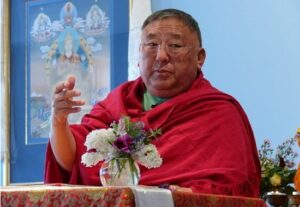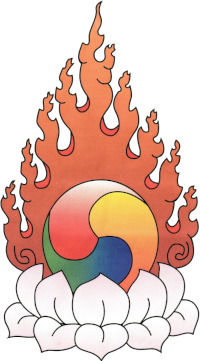The question rises, why do we need both? In this country we never raise that question. Everybody talking about meditation talks about focusing: sit down, count your breath. But no one really talks about the penetrating mind, the mind that goes deep down and finds out. For example, if we talk about addiction to negative emotions – where the addiction is, what it does to us, how we stop it – if we would do a penetrative meditation on it, we would get the answer, so we would know how to handle it.
On one hand, we are getting all this information through teachings, through books. Many Buddhist books are available these days. That is unlike a few decades ago, when there hardly may have been any books. There were Alexandra David-Neel’s books, there was Evans-Wentz. And we had Anagarika Govinda. And many people read Lobsang Rampa’s novels. All of them are very authentic spiritual books, but that was all. Now there’s plenty of true, genuine Buddhist material available.
So on one hand, you’re going to get all this information and on the other hand, one has to develop that very mind within oneself.
What we need besides the focusing mind is the meditation with the laser-sharp mind, what we call vipashyana [Tib. lhak tong], specially seeing. If you don’t have that sharpness, if you only have the focusing, then you will never penetrate the causes of the problems. We all have a superficial idea of what hatred is about. We all have a very superficial idea of what obsession is about. But we really don’t know it deeply enough. What is hatred really? How does it work? Where does it come from? what makes it function? How do you cancel it? For that, you need this other half of meditation. That’s why the two are necessary.
First of all, focusing is necessary. If you don’t have that, your mind is never going to be focused enough to be able to penetrate. It’s going to run here and run there, even though you meditate for a long time. You will develop a tremendous wittiness, but the witty mind will touch and touch and run and run. That’s what happens. Information is available, so the mind picks it up, and it’s very good in saying, ‘Ah, this is this, this is that.’ But you cannot deal with it.
Even in our Gelugpa tradition we sometimes do have that problem. It is a big problem, because they are great scholars, who learned a lot, and were great at debating, too. In the debate you can see the movement, you see whatever is wrong, you get it, the whole thing comes up in your head, you can go ‘boop, boop, zing, zing, zing!’ and cut it. But then when you really have to get it within yourself, when you have to deal with it in your personal life, you have a problem. In some other traditions, they might keep on sitting and meditating and not know sharpness. That becomes a problem, too.
It is not the problem of the Gelugpa, it is the problem of the practitioners who learned a lot and became great scholars but never applied what they learnt. It’s not the problem of the Kagyupa or other traditions, it is the problem of practitioners being only interested in learning how to sit and sit with open eyes waiting till the cows come home. So, it’s not the problem of the tradition, it’s the problem of the practitioner.
Every tradition will tell you that you need both: shamatha as the base, and vipashyana as the necessary instrument. Very often they say that shamatha is like the horse, and vipashyana is like the horseman riding the horse. Or: shamatha is like the stable shoulder, and vipashyana like the sharp ax that cuts through the wood. You need both. And if you don’t have both, it will be a big problem.
~ Gelek Rimpoche, GOM, 2005, p. 20


